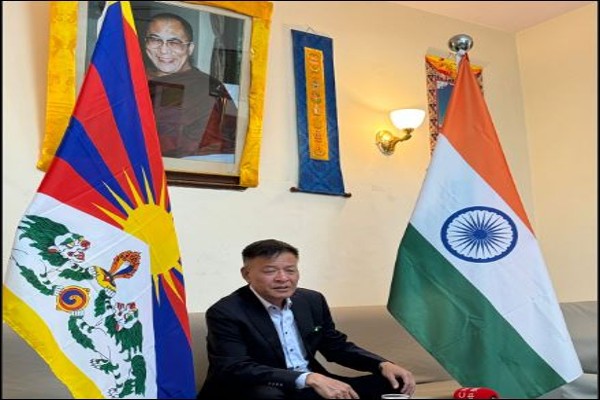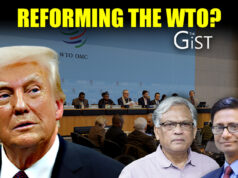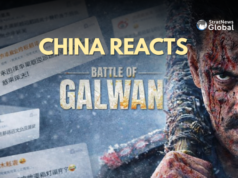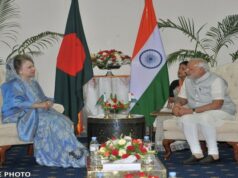Penpa Tsering, the Sikyong or President of the Tibetan Government in Exile, also known as the Central Tibetan Administration (CTA), is clearly a man in a hurry.
Speaking to a select group of journalists in New Delhi on July 16 before leaving for the U.S., he elaborated on the Resolve Tibet Act which was signed by President Joe Biden into law on July 12. He also insisted that despite fervent denials by Beijing, the CTA had been holding regular “back channel talks” with the Chinese authorities through a third country.
These talks, the last one being held earlier in July, were initiated by the Chinese, he said, without elaborating on the level of officials participating or the “third party” involved. “We do not have any expectations from these talks, but we keep the engagements going as part of our long term plans,” he said.
Back-channel talks between #China and #Tibetan Govt-in-exile going on: Sikyong Penpa Tsering.
With China, back channels often mean back stabbed.
https://t.co/VCsrWb8O35— Tenzin Namgyal (@Tenam108) July 19, 2024
On the Resolve Tibet act, he said his government had been working on it since April 2022, and the process began with the World Parliamentarians Convention on Tibet, “which we did in June 2022, in Washington, DC.” This was followed by a testimony before the US Congress on the historical status of Tibet, which in turn was the basis of the first draft of the bill, now known as the Resolve Tibet Act.
He then went on to explain that the CTA was committed to the Middle Way promoted by the Dali Lama to resolve what he described as the Tibet conflict, since the words “issue” or “dispute” did not reflect the true picture.
However, he said, a middle path made no sense unless you defined the two extremes of the path, or what he described as the ‘polarities.’
“Without polarities, there cannot be a middle way…and without recognition to the polarities, there is no value for a middle way. ..So we decided to change the strategy in the sense that of the two polarities, one is the present situation of Tibet under the repressive Chinese Communist Chinese government, and the other is the historical status of Tibet as an independent state,” he said. “Tibetan conflict is the correct term as the real issue is the Chinese occupation of Tibet.”
Brushing off suggestions that China’s renaming of various places in Tibet would erase or dilute its unique culture and identity, he said: “Nowadays Beijing has started calling Tibet as Xizang. But we are now researching every name in Tibet and we will soon release a map of Tibet which will have the original Tibetan names.”
“As far as China is concerned, they have always said Tibet is not an issue at all for them. Because for over 40, 50 years, they worked to convince the world and make them repeat the statement that Tibet is part of PRC. And the world repeated this like a parrot without even going through Tibetan history.
“That is why when I travel these days, I carry these two books, one by a Chinese professor and one by Michael Greenwald, who looked at Tibetan history from a legal perspective, and proves that to date, Tibet has never been considered part of China,” the Sikyong said.
The fact that this act categorically describes Tibet as an unresolved conflict directly challenges “China’s position that there is no problem in Tibet,” he said, before elaborating on the difficulties of getting such an act passed as a law by the U.S., the only country that has a law on Tibet since 2002.
The US Tibet Policy Act of 2002, now called U.S Tibet Support and Policy Act following a 2020 amendment, insists that only the Dalai Lama and the Tibetan people have the right to decide on his reincarnation. “It is the reincarnation of His Holiness Dalai Lama, and not Xi Jinping,” said the Sikyong.
Speaking about the visit by a bipartisan US delegation to Dharamshala before President Biden signed the Resolve Tibet Act into a law, he said that Tibetan people were able to rejoice after a very long time. “Tibet coming back into the limelight is, is a huge source of inspiration for the Tibetans inside and outside.”
But according to some experts, it’s too early to pop the champagne.
China had no conceivable reason to soften its stand on Tibet, they felt, because that would encourage dissent in other restive areas like Xinjiang and Hong Kong. “Instead, Xi is actually tightening his grip on these regions, so even if there are these so-called talks going on between the CTA and the Chinese, they essentially mean nothing,” said one.
“I would be very careful to say ‘Oh! the world is changed, they (the US) have passed an act,’ ” warned former national security adviser and ambassador to China Shiv Shankar Menon.
Speaking at the launch of a book on Tibet by former diplomat Dilip Sinha a day before the Sikyong’s press meet, Menon said America’s commitment to Tibet had clear limits.
“Today, the Americans see it as in their interest to at least wave the flag of Tibet but this doesn’t extend to recognising Tibet… It is driven not by the concern for Tibet, the primary driver here is the rivalry with China.”
Great power rivalry cannot be leveraged to resolve the Tibetan issue, he said.
However, he said India’s efforts to protect Tibetan culture, civilization and identity was laudable, because otherwise Tibetans could have become another “lost people” like the Armenians.
In a career spanning three decades and counting, Ramananda (Ram to his friends) has been the foreign editor of The Telegraph, Outlook Magazine and the New Indian Express. He helped set up rediff.com’s editorial operations in San Jose and New York, helmed sify.com, and was the founder editor of India.com.
His work has featured in national and international publications like the Al Jazeera Centre for Studies, Global Times and Ashahi Shimbun. But his one constant over all these years, he says, has been the attempt to understand rising India’s place in the world.
He can rustle up a mean salad, his oil-less pepper chicken is to die for, and all it takes is some beer and rhythm and blues to rock his soul.
Talk to him about foreign and strategic affairs, media, South Asia, China, and of course India.





